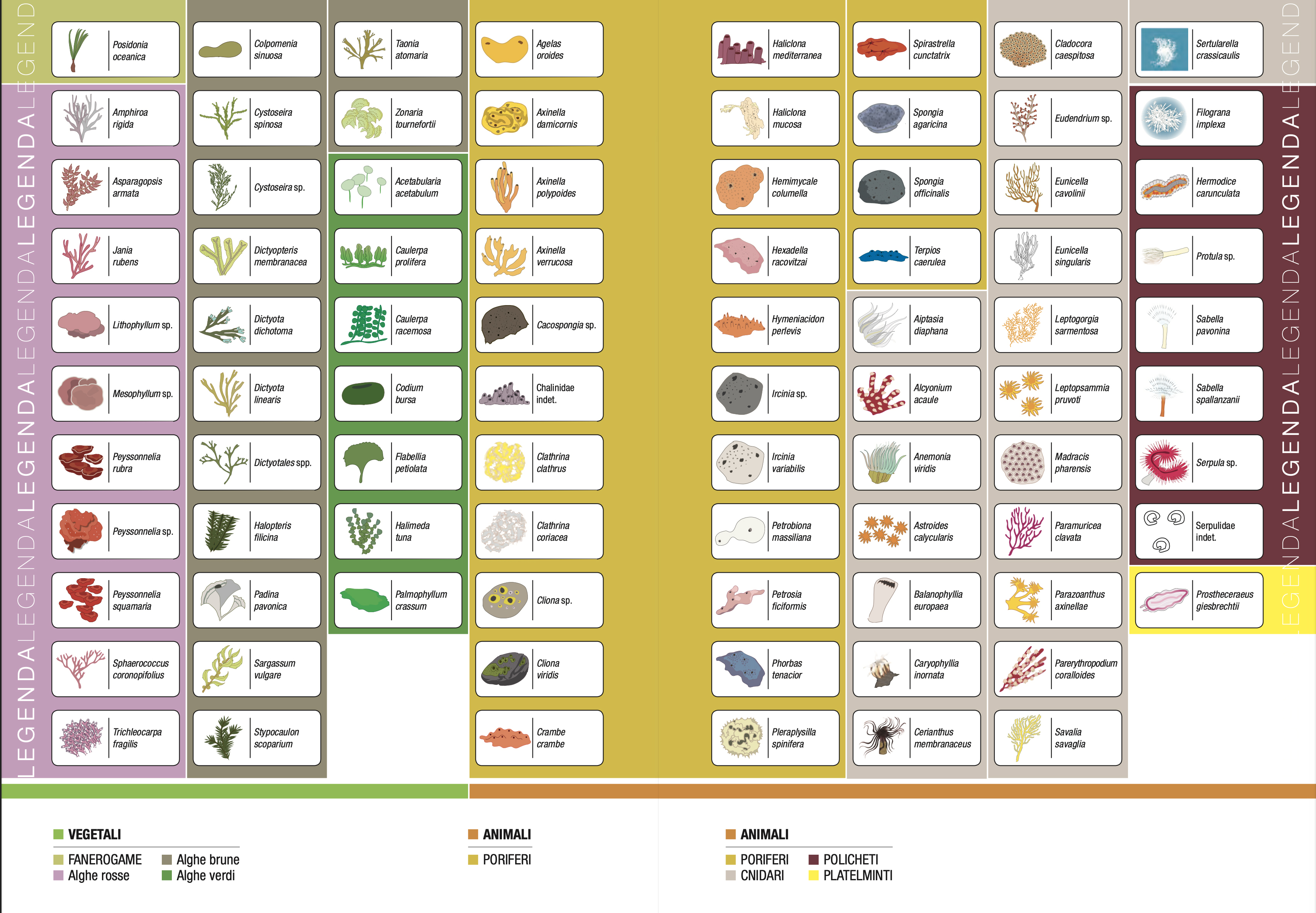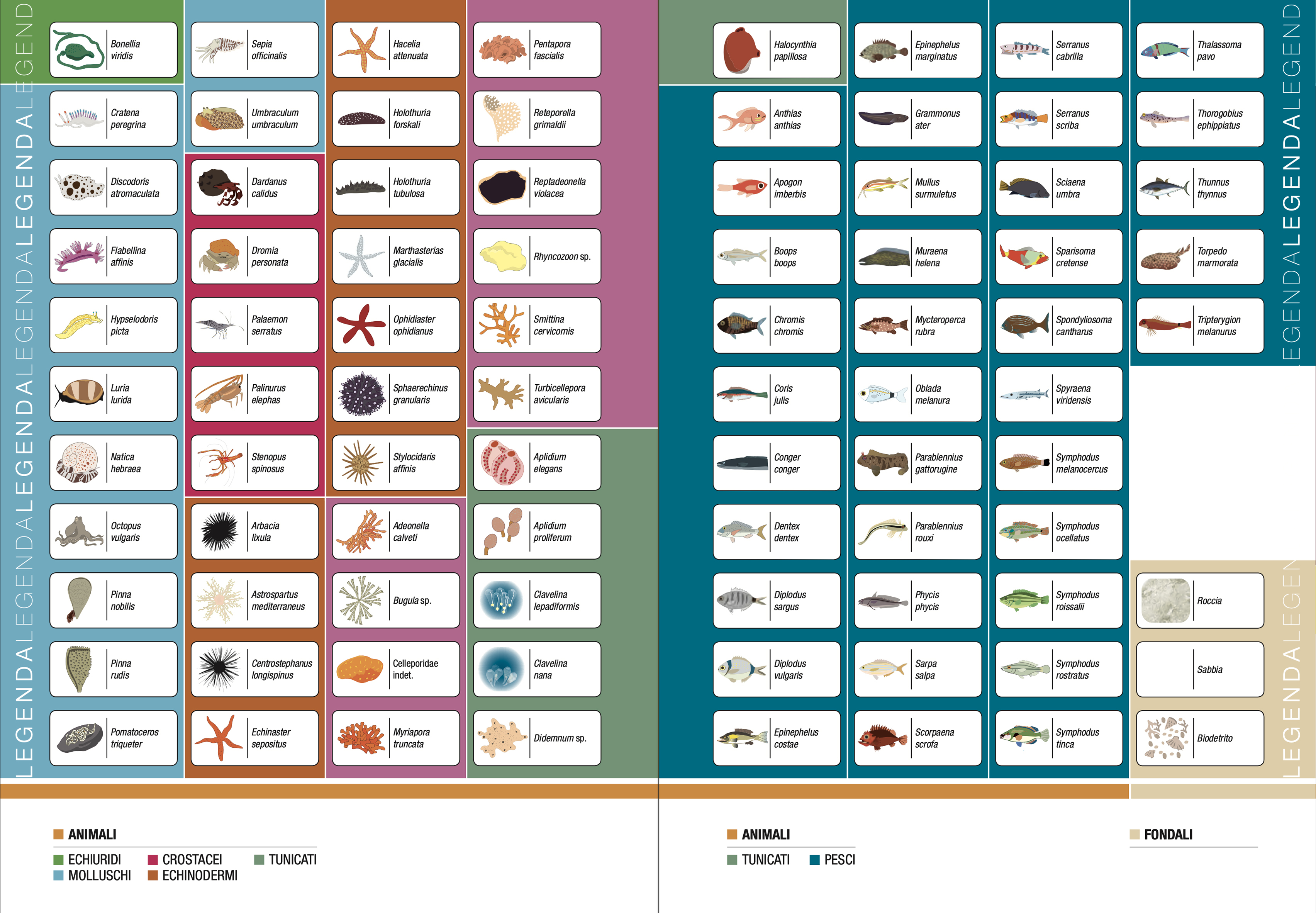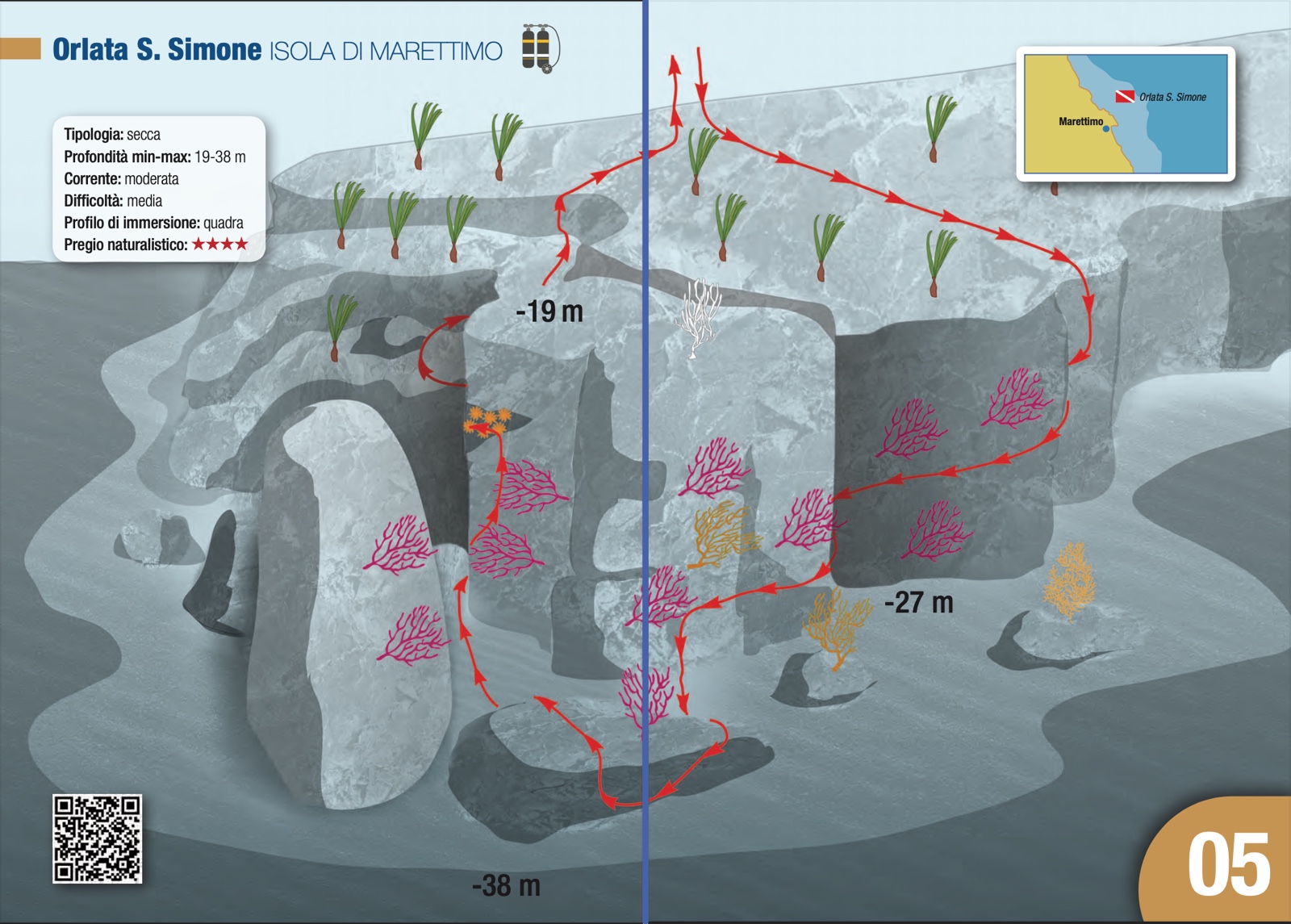Site 5 - Orlata San Simone
Beautiful, colourful sub-vertical walls full of ravines characterise this itinerary. The descent into the blue takes us to 19 m on the posidonia and rich algal populations (Sphaerococcus coronopifolius, Asparagopsis armata, Flabellia petiolata). At a depth of around 23 m, the first colonies of the red gorgonian Paramuricea clavata are encountered. On the vaults of the ravines, the colours of sponges such as Hexadella racovitzai, Agelas oroides, Chondrosia reniformis, algae (Halimeda tuna, Palmophyllum crassum, Peyssonnelia sp.) and bryozoans (Reteporella grimaldii) can be appreciated. A rich fish fauna lives in this environment: specimens of brown grouper (Epinephelus marginatus), snappers (Dentex dentex), Serranus cabrilla and Serranus scriba and clouds of Chromis chromis are among the most frequent encounters. Proceeding beyond the orlata, at about 30 m, a sub-vertical wall is encountered near which, at the base of the red fans of the gorgonia P. clavata, the rock is characterised by the colourful sponges A. oroides, Ircinia sp., H. racovitzai, Spirastrella cunctatrix, and the yellow madrepora Leptopsammia pruvoti. The gorgonian can host rounded aggregates of the polychaete Filograna implexa and colonies of the orange bryozoan Pentapora fascialis on its branches. In the rifts one can see the urchin Centrostephanus longispinus, blue patches of the sponge Phorbas tenacior and yellow patches of Axinella damicornis. On the bottom, at about 37 m, there are rocks that host colonies of gorgonians Leptogorgia sarmentosa, P. clavata, Eunicella cavolinii, whose branches can be parasitised by the alcyonaceous Parerythropodium coralloides. On the way up, swimming towards the channel separating the heath from the boulders, colonies of E. singularis and the sponge Clathrina clathrus can be seen. Burbot (Spondyliosoma cantharus) are also common, including large ones. The accumulation (cone) of detritus in front of the heath forms a kind of channel on the wall of which large fans of P. clavata hide the red bryozoan known as 'false coral' (Myriapora truncata) at their base. Amongst the fish you can recognise the thrushes Symphodus rostratus and S. melanocercus, and the musdea (Phycis phycis). Sometimes large specimens of bluefin tuna (Thunnus thynnus) can be seen in the blue.
Legend:


-
Information
-
Contacts
